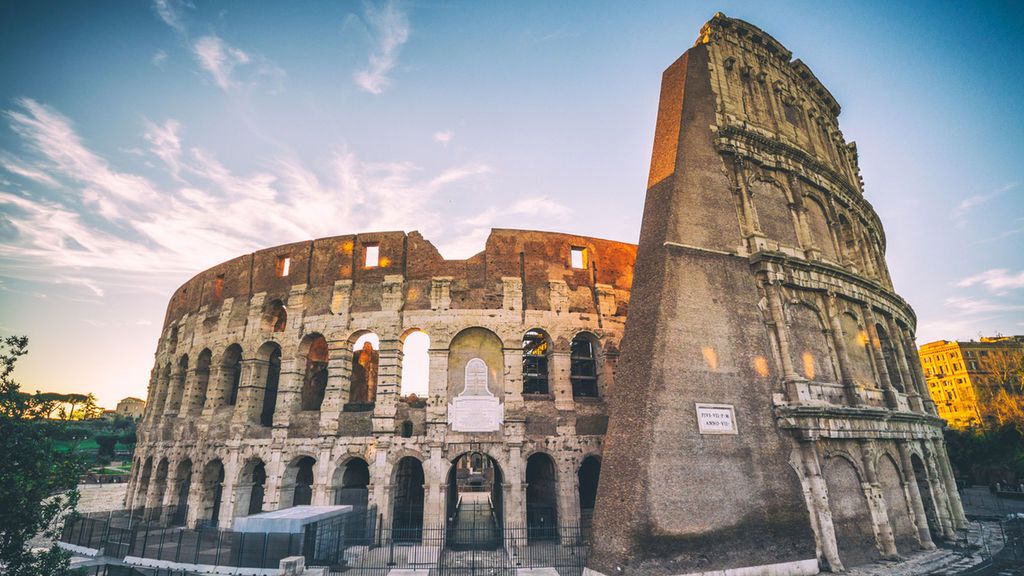
The best places to visit in Rome according to the official local guides on our platform. Discover what to see in the ‘Eternal City’ either for a day or for a whole weekend (2 or 3 days).
Rome is one of those cities they say you should visit and explore at least once in a lifetime. The ‘Eternal City’, is capital of Italy and, not long ago, it was the most important city in the world. Roman culture is present in every neighborhood and city street, and there are hundreds of iconic places that you are not going to want to miss.
In addition, it is currently one of the most popular destinations for tourists and travelers from all over the world. Every year Rome receives thousands of foreigners on its doorstep who seek to get to know every corner of Rome on their trip.
Content
The best way to visit and see Rome: do a free walking tour
We recommend if you want to see Rome and not miss all those essential places, that you should do it with a local guide who can accompany you and teach you about all the hidden charms of the city. On GuruWalk‘s online platform you can find a wide variety of free walking tours in Rome so you can choose a tailor-made, enjoyable and cultural tour that’s best for you.
Have you ever done a free walking tour? Visit the city in a different way with an official local guide.
GURUWALK
Once you know what a free walking tour is, it’s very likely you’ll understand why more and more travelers are doing a guruwalk in all the cities they visit.
These are the top 20 essential places in Rome that our gurus (local guides) have recommended for you so you can get to know the city in depth. Take notes and update your travel itinerary with our list of what to see in the Eternal City!
1. St. Peter’s Basilica & Square
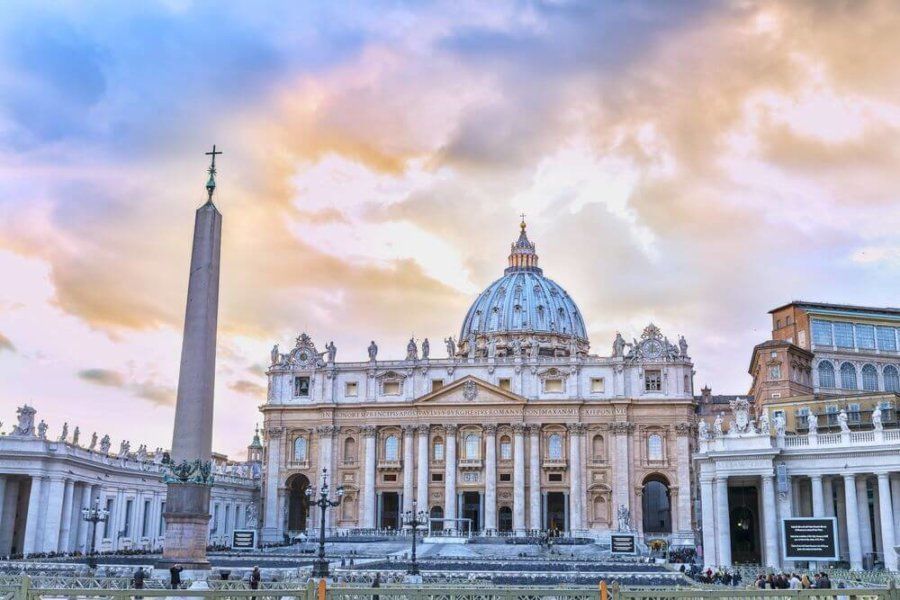
St. Peter’s Basilica is the most important church in the Catholic religion, in addition to being the largest cathedral in the world and the place where the tomb of the apostle San Pedro rests. It is attached to the Vatican, the papal headquarters where the highest Catholic figure, the Pope, usually resides. Inside you can see the Pieta by Michelangelo or Bernini’s Baldachinno, as well as giving tourists access to one of its domes that gives a unique viewpoint of the entire city.
San Pedro’s Square brings thousands of travelers and visiting parishioners together every day. In the center of the square, stands the Vatican Obelisk which originated from the Circus of Nero. In addition to this structure, there are different entrances and points of interest that we can find throughout the entire square.
Also, if you want to see the Pope, there are audiences on Wednesdays or you could also attend the brief Angelus ceremony on Sunday. Arriving before 12 noon in the square should be enough to see for the Angelus and for the audience, an entry is needed but it is relatively easy to get them.
| PRICE | Ascent to the dome: – Lift to the terrace and climb 320 steps on foot: € 8. – All on foot (551 steps): € 6. *Free entrance to the basilica. |
| SCHEDULE | – October-March: 07.00 to 18.30 hours. – April-September: 07.00 to 19.00. *Dome: opens one hour later and closes one hour before. |
If you want to know all the details and secrets about one of the most emblematic places in Rome, we recommend this free tour. The local guide will tell you everything you need to know about the Vatican’s history and culture.
| FREE WALKING TOUR: Ancient Rome historical tour. |
2. Vatican Museums
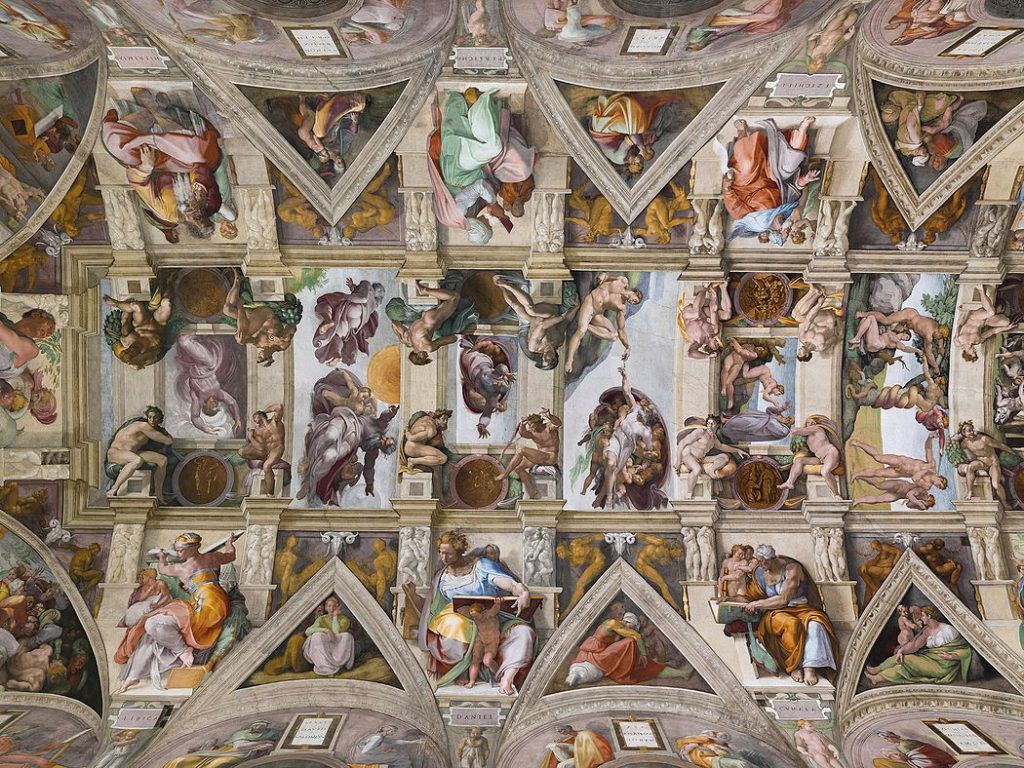
The Vatican Museums are a mandatory stop in Rome for any art lover. Located within Vatican City, they house a large number of artworks, highlighting the Sistine Chapel above all.
This great extension of artwork represent the artistic heritage of the Popes. They are called ‘Museums’ in the plural because it is a collection of collections divided into different areas: Museum of Archeology, Pinacoteca, Fresco Cycles, the Collections of Ancient Art, Documents and Historical Objects and a Collection of Contemporary Art.
In addition, the museum structure itself is formed in a spectacular architectural framework with stairways, galleries and rooms designed by some of Italy’s most iconic architects like Bramante, Rafael, Pirro Ligorio or Simonetti and all in a 7-kilometer route.
| PRICE | – Adults: € 16. – Children (6-18 years) and students (19-26 years): € 8. *The last Sunday of each month free admission. |
| SCHEDULE | – Monday to Saturday: 09: 00-18: 00 hours (last access 16: 00h). – Last Sunday of the month: 09.00-14.00 hours (last access 12.30h). *Closed the rest of Sundays and some holidays. |
In the same way as St. Peter’s Square or the Basilica, there is the option to visit the Vatican Museums in the company of a local guru from Rome. A new and exciting way to get to know one of the most beautiful and artistic places in the world.
3. Roman Colosseum
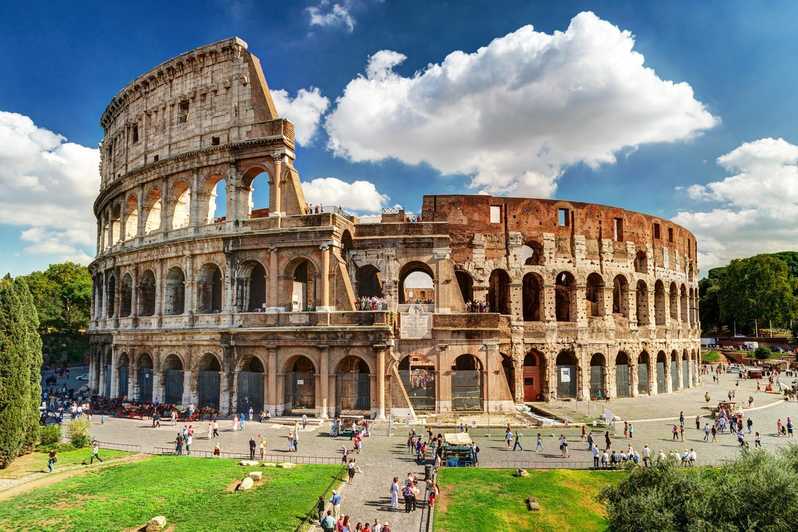
The Roman Colosseum is this city’s most famous monument. It is considered one of the 7 Wonders of the Ancient World and its state of conservation with respect to its construction is amazing. In addition, UNESCO declared it a World Heritage Site for being the largest Amphitheater of Antiquity, and one of the symbols of the Roman Empire’s splendor.
Formerly called the Flavian Amphitheater, it served as a type of distraction for the people (Panem et Cirsenses – Bread and circus), performing all kinds of gladiatorial fights as well as public executions. Currently, it is one of the most visited tourist attractions in the world, with entry lines sometimes exceeding a kilometer long!
| PRICE | – Combined entry: Colosseum, Roman Forum and Palatine. – Adults: € 12. – EU citizens (18-24 years): € 7.50. – Children under 17 years (EU): free. |
| SCHEDULE | – Open every day from 08: 30-19: 00. *Closed December 25 and January 1. |
One of the alternatives to just visiting the Roman Colosseum is by doing a guruwalk (free tour) that includes this monument in your tour. This way you can get to know one of Rome’s essential places with all its hidden charms and interesting anecdotes.
4. Roman Forum
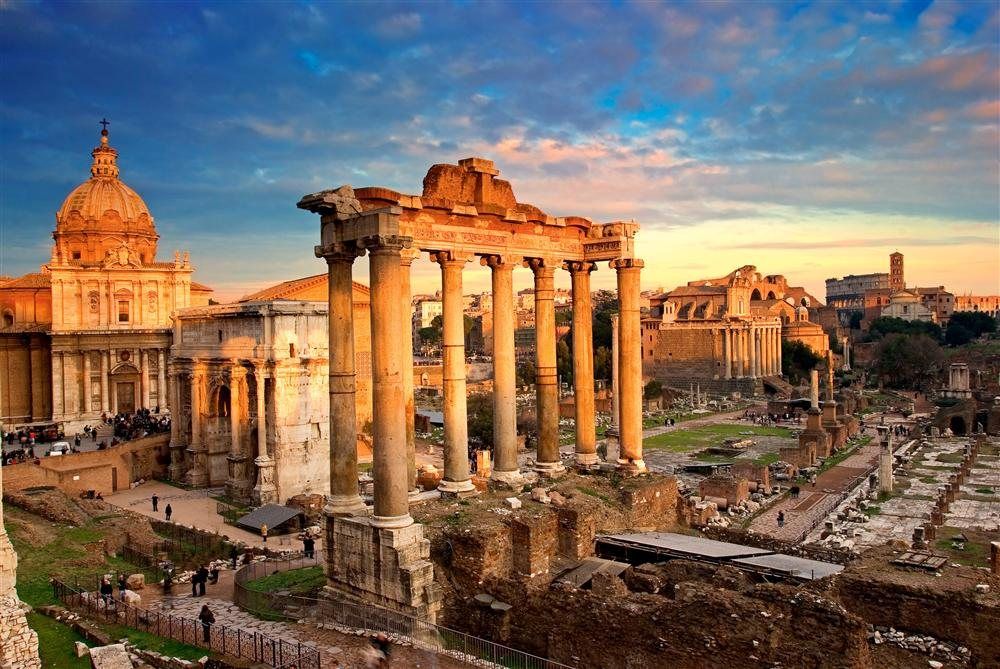
The Roman Forum, formerly considered the nerve center of the city, was considered the central / main square where people gathered. It was the place where trade, business, administration of justice and religion took place. There is a road called the Via Sacra that crosses the Roman Forum and connects it with the Colosseum.
In its current state, you can see the remains of several centuries due to the Roman custom of building on ancient ruins. The excavation that has made it possible to see how the forum is right now was completed at the beginning of the 20th century.
The Roman Forum’s main points of interest are the Via Sacra, The Arch of Titus, The Arch of Severe Seventh, the Temple of Antonio and Faustina, the Basilica of Maxentius and Constantine, The Curia or the Seal Column. All these places are part of the common structure of the forum, having been built at different times.
| PRICE | [+] Combined entry: Colosseum, Roman Forum and Palatine. – Adults: € 12. – EU citizens (18-24 years): € 7.50. – Children under 17 years (EU): free. |
| SCHEDULE | – Open every day from 08: 30-19: 00. *Closed December 25 and January 1. |
5. Trevi Fountain
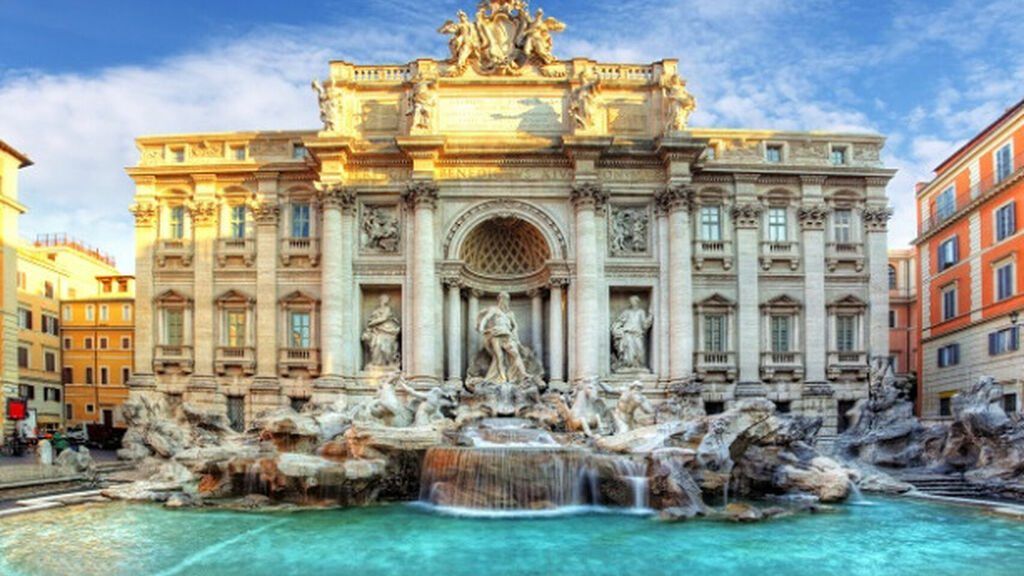
The Trevi Fountain is considered one of the most representative fountains of Rome as well as being one of the largest (almost 40 meters long) of the Baroque period in Italy. The source itself connects three main streets of the city marking the point of the Aqua Virgo, which was one of the old aqueducts that supplied water to the city.
In this monument, there is a tradition of throwing coins at the fountain with various theories about why it is done and what benefits it brings. The number of coins thrown has been growing year by year, and now it is being used to finance a supermarket for Romans in need.
If you are passionate about Rome’s squares and public places, as well as all the stories and interesting stories that surround them, you can take a look at this guided tour where you will be accompanied by an official local guide who can shed some light on all that!
| FREE WALKING TOUR: The Beautiful Squares of Rome. |
6. Maximum Circus
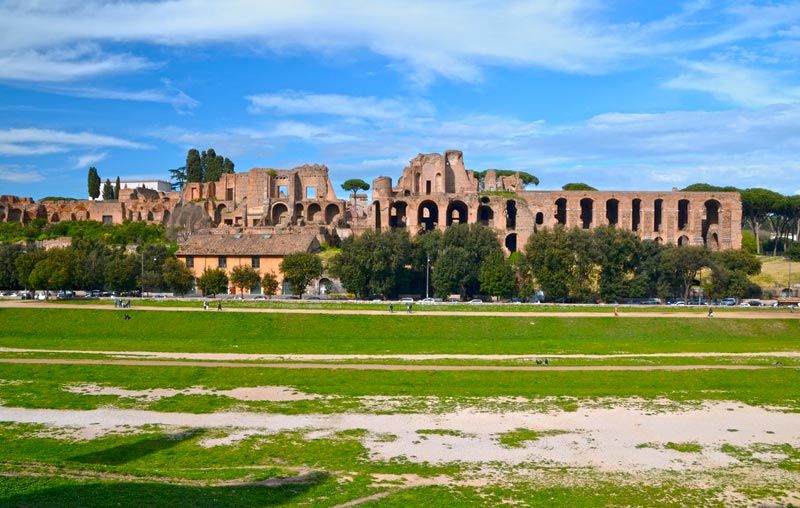
The Circus Maximus is located between the Aventine and Palatine mountains and was considered the largest public place in the city. The shape of the venue is elongated and had a capacity of more than 300,000 spectators, in addition to being the place where public games were held, with charriot racing being the highlight of the show.
All the action took place in the arena, which was 600 meters long and 225 meters wide, giving it the title as the largest in Rome, followed by the Flaminio Circus and the Maxentius Circus. In horse-drawn charriots, racers gave their all for victory, even men (slaves) competing for their freedom.
Currently, it is difficult to see the remains of the Circus’ structure, since the esplanade on which it stood is barely there anymore. It can be disappointing if you don’t have enough imagination to build a mental image of the Circus. It may be paradoxical that we place it as one of the places to see in Rome when there is hardly any trace of its structure, but the site radiates Roman history and gives you a good idea of what the city was like in the age of the Roman Empire.
A new and exciting way to get to know a place like this is by doing it in the company of a local guide who can fill you in on all those interestsing details.
7. Trastevere Neighborhood
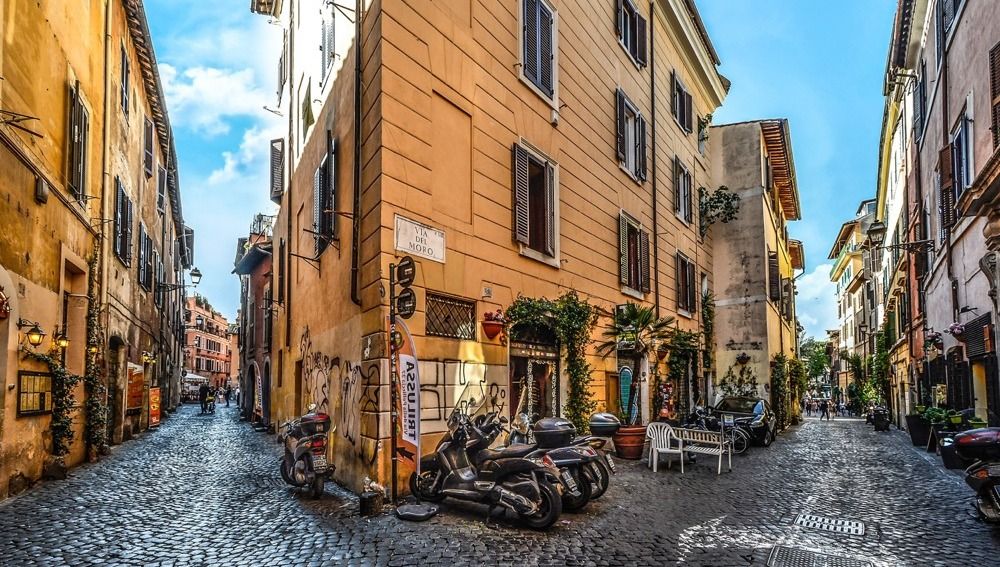
Rome’s Trastevere neighborhood is one of the most beautiful places in the city because of its bustling bohemian streets. In fact, we can find some of the most impressive churches in the Italian capital like the Basilica of Santa Maria. The fountain in front of the temple offers a perfect place to rest, have an ice cream or just serve as a meeting point.
The narrow streets of Trastevere where every corner has a story to tell, small medieval churches and facades seem like they have been taken from another page in history, will enchant you with all this and a thousand other things. Additionally, if you are looking to eat well, you are in one of the best culinary areas in Rome with a wide variety of traditional taverns, family restaurants and more modern premises.
The best things to do and see in Trastevere, Rome
If you want to know more details about the most emblematic neighborhood of the Eternal City, don’t hold back and take a look at this free tour in Trastevere:
| FREE WALKING TOUR: A walk in Trastevere. |
8. Catacombs of San Calisto and Via Appia
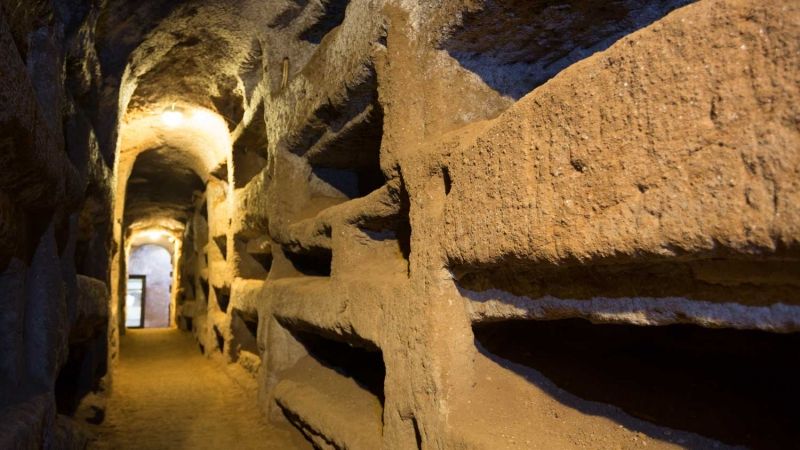
The catacombs of St. Callisto were considered the official cemetery of the Church of Rome in the third century. Nearly half a million Christians lie buried in them, including a dozen martyrs, as well as sixteen Popes along its corridors which stretch more than 20 kilometers in length.
Access to the catacombs is done through the Appia road, and is possibly the point of interest that is furthest from the city center. If we enter, we can see how there is a great symbology along the route, being one of the ways that ancient Christians were able to show their faith without being discovered.
| PRICE | – Adults: € 8 – Children under 15 years: € 5. |
| SCHEDULE | – Thursday to Tuesday from 09: 00-12: 00 and from 14: 00-17: 00 hours. |
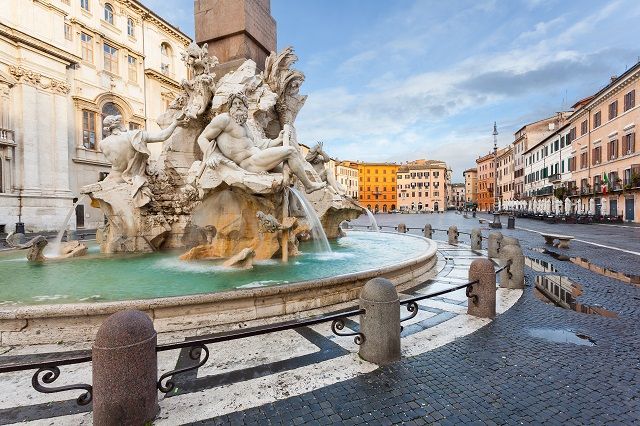
Piazza Navona is possibly one of the most beautiful and emblematic squares in Rome. It is located where the old Domitian stadium (Circus Agonal) dating from the year 86 was located, having a 30,000 spectator capacity where Greek athletic games were once played.
The fountains that are found in the square are this place’s real attraction: Fontana dei Quattro Fiumi, Fontana del Moro and Fontana del Nettuno. In addition, the Palazzo Pamphili and the Church of Santa Agnes also stand out as buildings that are worth seeing during a visit. As an interesting fact, until the 19th century, summer was used as a time to close the drains of the fountains and turn the whole square into ‘The Lake of the Navona Square’.
Without a doubt, this is one of the essential places to see in Rome accompanied by an official local guide to show you all about its secrets:
| FREE WALKING TOUR: Trastevere, Isola Tiberina and Jewish Ghetto. |
10. The Pantheon (of Agrippa)
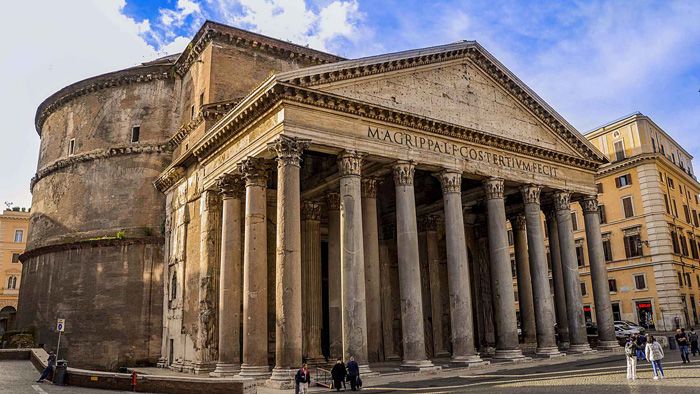
The Pantheon of Agrippa is the best-preserved architectural work of Ancient Rome, in addition to being considered as one of the architectural masterpieces present in the Italian capital. It was finished in the year 126 A.D., in the time of Adrian and received that name when it was built on the remains of the old Pantheon of Agrippa that burned in a fire in 80 A.D.
Its amazing state of conservation is due in large part to the fact that in the seventh century it was donated to Pope Boniface IV, who ended up transforming it into a church. The façade of the monument is composed of 16 columns that are 14 meters high. The dome has a diameter of 43.30 meters (higher than the Basilica of St. Peter) with an Oculus that allows natural light to enter the building.
| PRICE | Free. |
| SCHEDULE | – Monday to Saturday: 08:30 a.m. to 7:30 p.m. (Last access 19: 15h). – Sundays: 09:00 a.m. to 6:00 p.m. (Last access 17: 45h). |
11. Piazza di Spagna (Spanish Steps)
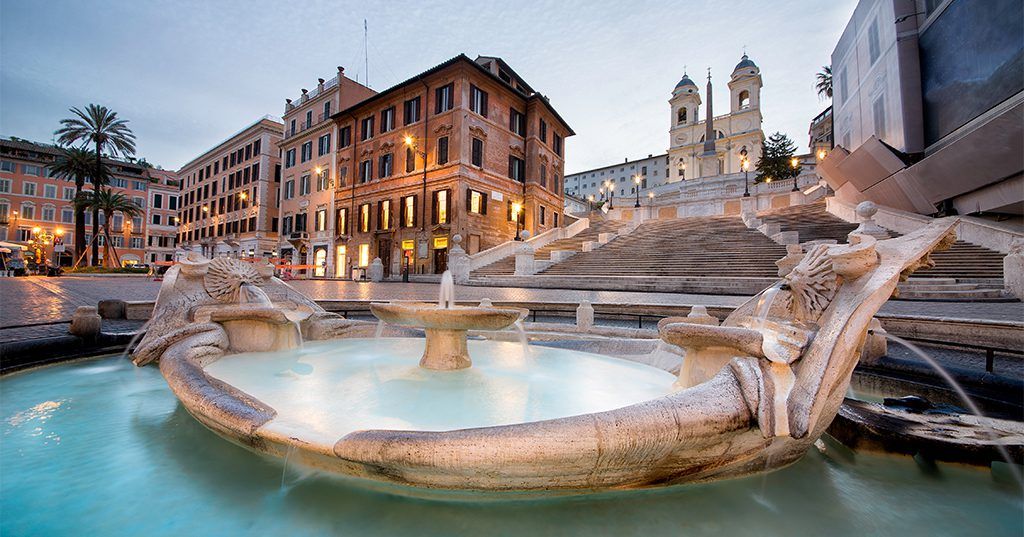
The Plaza de España is the perfect meeting point for any traveler. Located between the streets of Via dei Condotti, Via Frattina and Via del Babuino, it received that name because of the location of the Spanish embassy which has been there since the 17th century.
One of the most important parts of this square is the Staircase of Piazza de Spagna itself. It is a staircase consisting of 135 steps and was built at the beginning of the 18th century to create a link between the square and the Trinità dei Monti Church.
In addition, it also highlights the Fontana della Barcaccia which is located in the center of the square and was designed by Pietro Bernini for Pope Urban III. The fountain is based on the shape of a ship and the Bernini motifs can be seen in the structure: bees and suns. If you go to the Eternal City, without a doubt, the Plaza de España is one of those places worth checking out in Rome.
All the squares in Rome have their own history, always with a lesser-known part that only the locals know. That is why if you are going to visit this place in the capital of Italy, you should do it with a local guide who will enrich your vacation so much more.
12. Castle Saint Angelo
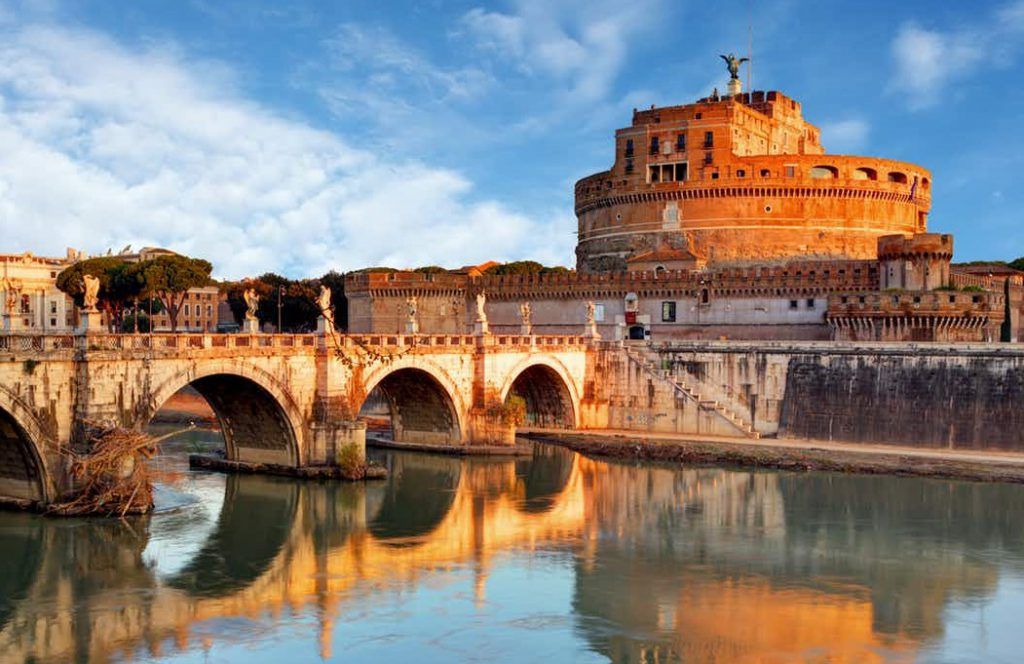
Sant’Angelo Castle (also called Hadrian’s Mausoleum) is located on the right side of the Tiber River, very close to St. Peter’s Square and the Vatican. The building dates from AD 139 from the time of Emperor Hadrian who initially intended it to be a mausoleum for his family. However, in 403 it became a military building and was integrated into the Aurelian Wall.
In 1277 an 800-meter long, walled corridor was built connecting the castle with the Vatican to protect the Pope in case of danger. The building is composed of five floors with a spiral ramp that serves as access to the different heights. There is a terrace on one of the upper floors that gives you a privileged position to get some amazing pictures of Rome.
It is one of the most representative places in this part of the city, and it is almost mandatory to put it on the top 20 list of what to see and visit in Rome.
| PRICE | – Adults: € 14. – Children under 18 years and over 65 years: € 7. |
| SCHEDULE | – Tuesday to Sunday: from 9:00 a.m. to 7:30 p.m. |
13. Altar of the Fatherland
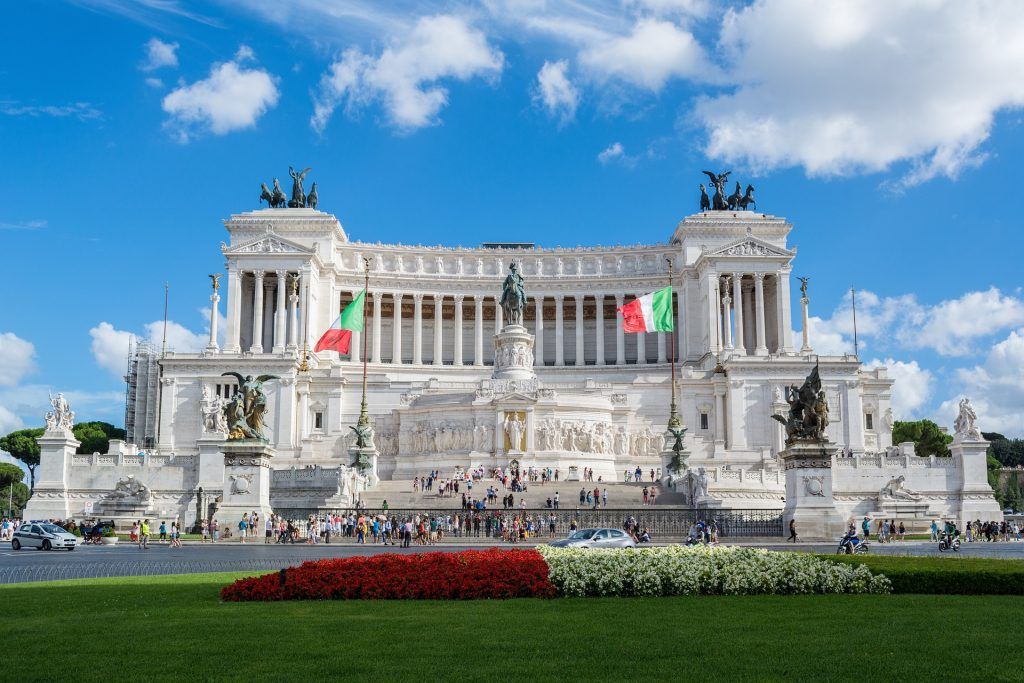
The National Monument to Vittorio Emanuele II was innaugurated in 1911 as a tribute to Victor Manuel II himself, the first king of Italy after the country’s unification took place. Within the enclosure, itself you can find the Institute for the History of the Italian Risorgimento and the Central Museum of the Risorgimento.
The monument measures 70 meters high by 135 meters wide supported by dozens of Corinthian columns and countless stairs built in white marble. In the middle, you can see the bronze statue of Victor Manuel, escorted by two chariots guided by the goddess Victoria on top of the 16 columned portico structure.
In 1921 the tomb of the unknown soldier was officially set here, a place where the “eternal flame” can always shine, in addition to always being guarded by two soldiers. It is one of the monuments in Rome that has been most criticized by citizens because of its location (clash of styles with the surrounding buildings) as well as for the excessive costs to build it.
| PRICE | Free entrance. *Lift: Adults: € 7. Children under 18 / over 65: € 3.5. |
| SCHEDULE | From 09:30 to 19:30 hours. (Last access 18: 45h) |
14. Piazza Campidoglio and Capitoline Museums
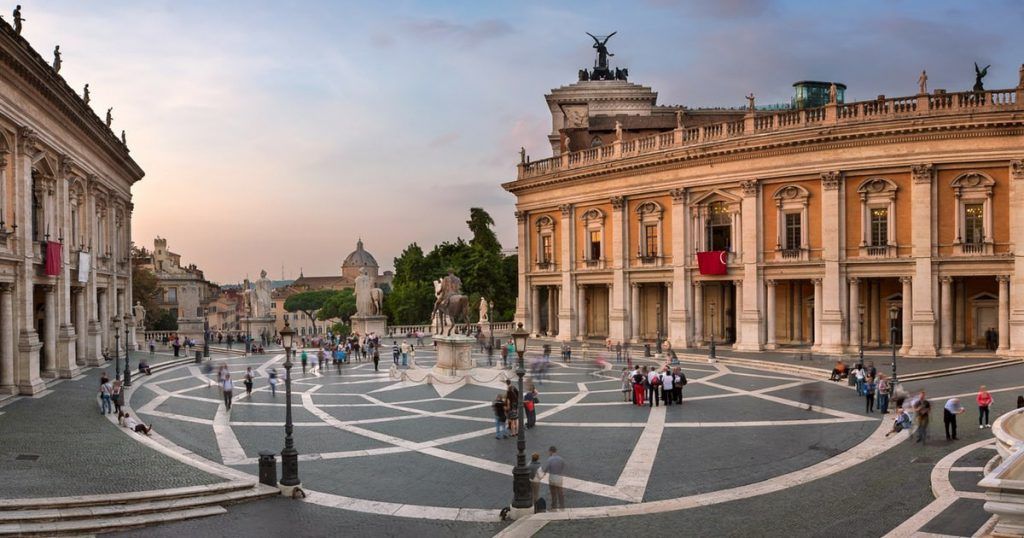
The Campidoglio Square or Capitol Square is located at the top of the Capitoline Hill, being the first place in the city that broke with the classical style of Rome. It was Pope Paul III Farnese who commissioned Michelangelo to design a square with a modernist style, orienting it towards St. Peter’s Basilica.
In the center of the square you can see an equestrian statue of Marco Aurelio made in bronze. The original is kept in the Palace of the Counselors. However, an exact reproduction of the same statue has been left in its place to honor the original design of this characteristic Piazza.
The Capitoline Museums had their origins in a donation made by Pope Sixtus IV in 1471 from a collection of bronzes. These museums consist of two large buildings: Palace of the Conservatives (Palazzo dei Conservatori) and the New Palace (Palazzo Nuovo) that are joined by Galleria Lapidaria.
We advise you to sign up for a guided tour by a local guru who can show you this essential spot in Rome. This guru can share more info on both the square and the museums that it connects.
| PRICE | – Adults: € 15. – EU citizens between 18-25 years old: € 13. – Children under 18 / people with reduced mobility: Free admission. *Free admission first Sunday of the month. |
| SCHEDULE | From Tuesday to Sunday: from 9:30 a.m. to 7:30 p.m. |
15. Market and Trajan Forum
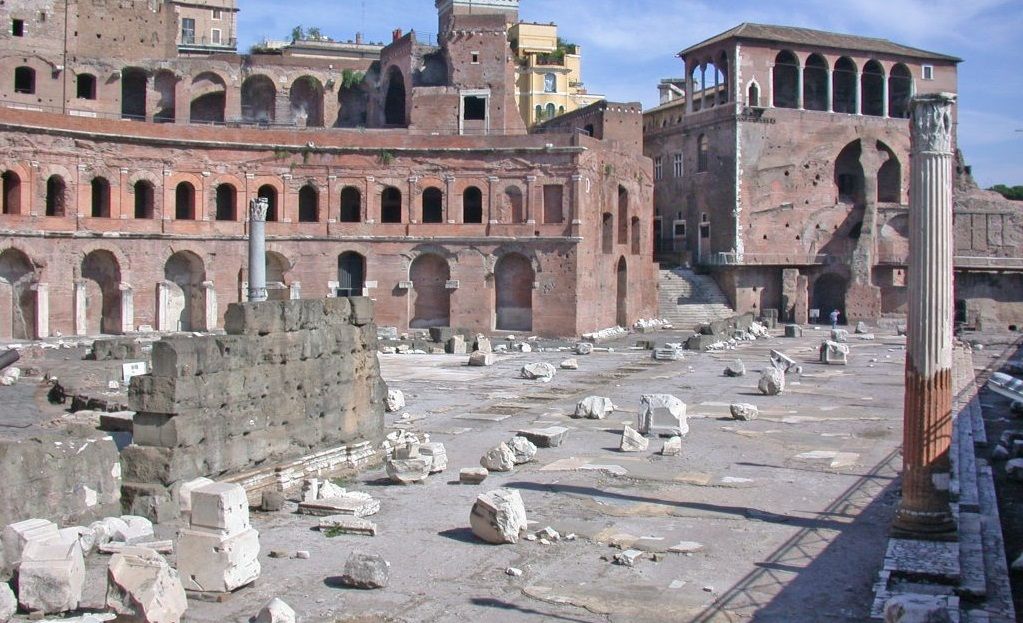
Trajan’s Market is considered the first covered shopping center in history. It was built between 100-110 AD and currently is the location of the Imperial Forum Museum. The building is made of brick and has a total of six floors which housed more than 150 stores.
On an architecture level, it still retains an important part of its visual appearance, only surpassed by the state of conservation of the Colosseum. It is one of the monuments in Rome that is worth visiting since it is considered an essential stop on any city tour.
| PRICE | Adults: € 9.50. EU citizens between 18-24 years: € 7.50. |
| SCHEDULE | From Tuesday to Sunday: from 9:00 a.m. to 7:00 p.m. |
16. Campo dei Fiori
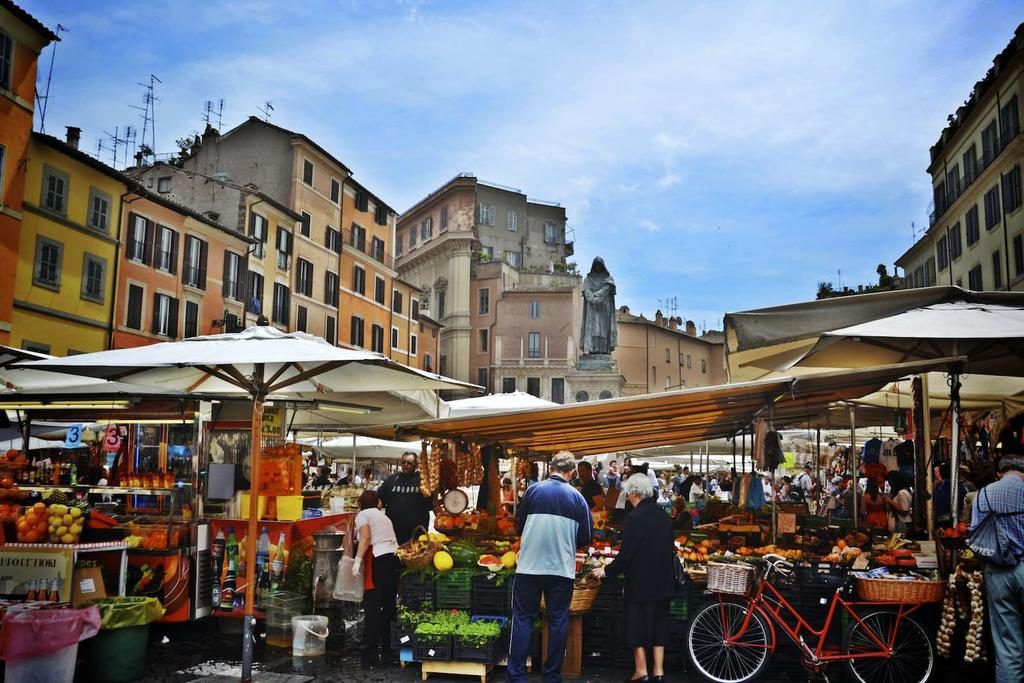
One of the most emblematic squares of the city both for its market and for its terraces and premises is Campo dei Fiori (Field of flowers). It was Pope Calixto III who commissioned to build it in an open part of the city where there was a field of flowers, thus giving the name to the current square. After several renovations and the construction of important buildings such as the Orsini Palace, it became a popular place for Rome’s most important and iconic citizens.
However, this public space wasn’t always flowers and smiles, since it was also used for public executions. There is a statue of Giordano Bruno who was burned at the stake here in 1600 when he was accused of heresy, only to late have a monument in his honor erected here in 1889.
It is an ideal place for a little distraction from the monuments and to rest, being a little less cultural than other places of interest in Rome, although it is generally very crowded with tourists.
| FREE WALKING TOUR: NOT SO TOURISTY Rome Free walking tour. |
17. Palatine Hill
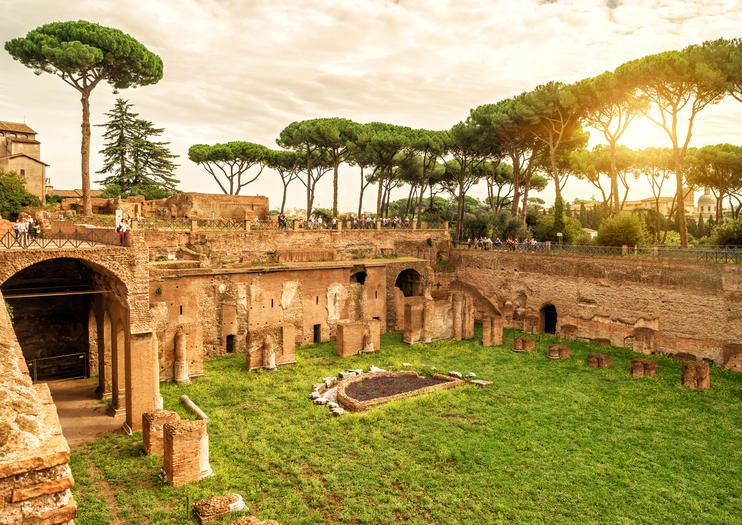
The Palatine Hill is located 40 meters above the Roman Forum and is the most central hill in the city. You could say that this place is the cradle of Rome as it is believed that it could have been inhabited ever since 1,000 BC. As far back as the Republican era, some of Rome’s wealthiest citizens settled on this mountain, building palaces whose remains are still preserved.
The mythology of this culture states that Luperca, the wolf that protected Romulus and Remus, had its cave located on the Palatine Hill. After arguing, Romulus killed Remus and founded the city of Rome on the banks of the Tiber River.
These are the main points of interest: the Domus Flavia Palace, the House of Livia, the House of Augustus, the Farnesian Gardens, the Domitian Racecourse, and the Palatine Museum.
| PRICE | – Adults: € 12. – EU citizens between 18-24 years: € 7.50. – Children under 17 and over 65 belonging to the EU: free admission. |
| SCHEDULE | – Every day from 08:30 to 19:00 hours. |
The best way to get to know the Eternal City is by learning about some of the hidden charms and secret spots that only locals know. Therefore, if you want a more complete view of the Palatine, we recommend that you take a look at this free tour:
18. Basilica di Santa Maria Maggiore
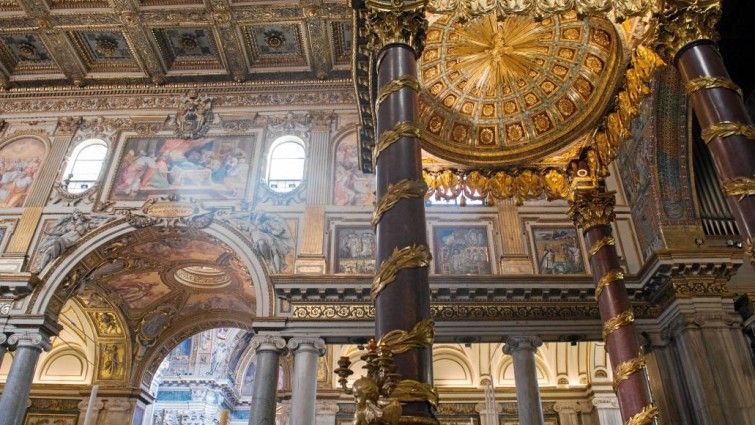
The Basilica di Santa Maria Maggiore is an old Catholic church that is the largest in Rome dedicated to the Virgin Mary, as well as being one of the four largest basilicas in the city. It was Pope Liberius who in the mid-fourth century ordered this Basilica to be constructed on top of the pagan temple that worshiped the goddess Cibeles.
Over the years different names have been attributed to him, such as; Santa María de las Nieves, for the snowfall that inspired the shape of the basilica, Santa María Liberiana, in honor of Pope Liberio, or Santa María del Pesebre after receiving a relic of the Holy Manger. However, in the end it has remained as that of Santa María la Mayor, because it is the largest church of worship for the Blessed Virgin Mary in Rome.
Inside, we can see a wide variety of architectural styles with the Baroque prevailing over the rest. The building was restored and completely renovated in the 18th century, maintaining the façade and internal decoration of this period
| PRICE | – Adults: € 3. – Students and over 65 years: € 2. |
| SCHEDULE | – Every day from 07.00 to 18.30 hours. |
19. Hot Springs of Caracalla
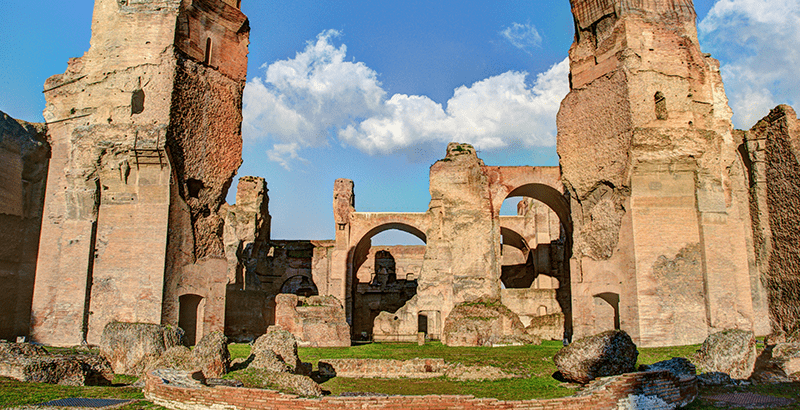
The Baths of Caracalla were completed in 216 under Emperor Caracalla (Marco Aurelio Antonio Basiano), and were one of the largest hot springs of his time. At present, there are hardly any brick walls and vaults, but much of the splendor that made this a treasured Roman landmark can still be appreciated.
These hot springs were a popular place of leisure for Roman society, which, in addition to providing hygiene, also helped strengthen social relations. In addition, in the enclosure one could also practice sports, go to the library or worship the god Mithras or other pagan deities featured in the temple.
| PRICE | Adults: € 8. EU citizens (18-24 years): € 4. |
| SCHEDULE | Tuesday to Sunday: 09:00 a.m. to 6:30 p.m. Monday: 09:00 a.m. to 2:00 p.m. |
20. Galleria Borghese
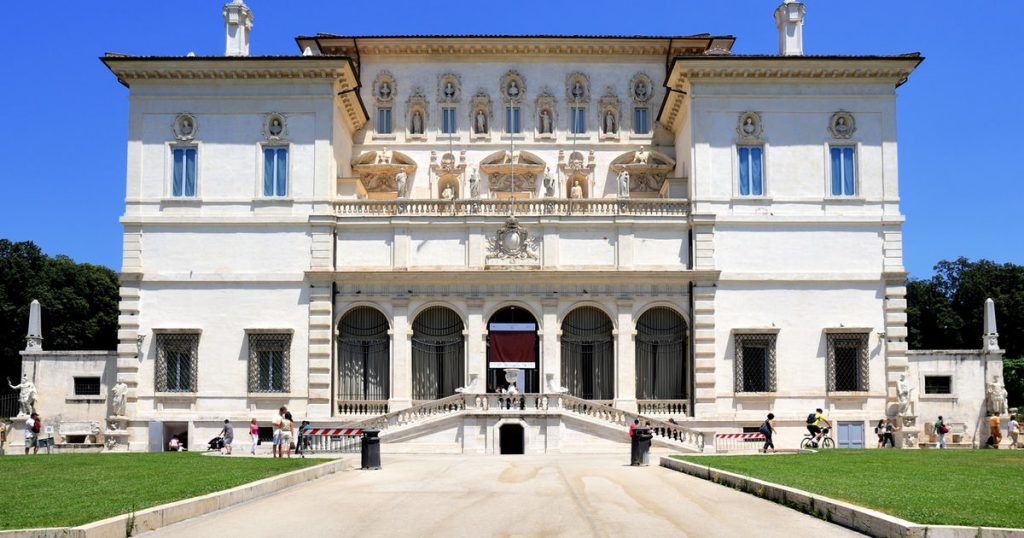
The Borghese Gallery is located in Borghese Gardens, and is one of the most important museums in the world. The gallery’s name corresponds to the great collection that Cardinal Scipione Borghese (Pope Paul V’s nephew) started in 1633 and which is now on permanent display in the gallery.
Scipione Borghese is considered to be one of the greatest collectors of Caravaggio’s work, in addition to being Bernini’s first patron. In the museum, you can see a wide collection of works by both artists.
To be able to book a reservation at the Borghese Gallery, you have to do the paperwork or do it by phone or online, through its website. We advise you to do it a few days in advance due to the large quantity of visitors that this museum has every day. We have left this museum at the end of our list of what to see in Rome precisely so you do not forget to book your ticket.
| PRICE | Adults: € 20. Persons between 18 and 25 years belonging to the EU: € 9. Under 18 years: Free admission. |
| SCHEDULE | From Tuesday to Sunday from 8:30 a.m. to 7:30 p.m. Closed Monday. |
Map with the essential places to see in Rome
So, that wraps up our top 20 list for Rome. We know… we have definitely left out some of Rome’s charms. That’s the worst part about these ‘Top’ lists, having to leave so many out. However, if you have one that is your favorite, leave a comment and let the community know about your essential spots to visit in Rome, and see if you can book a guru walk to check it out and get the inside story to travel like a pro!
| BOOK NOW – The best free tours of Rome with Local Guides. |
In addition, there are always new destinations to visit where you can do free walking tours to get to know the place like a local and start sharing some more authentic experiences.
Leave a Reply